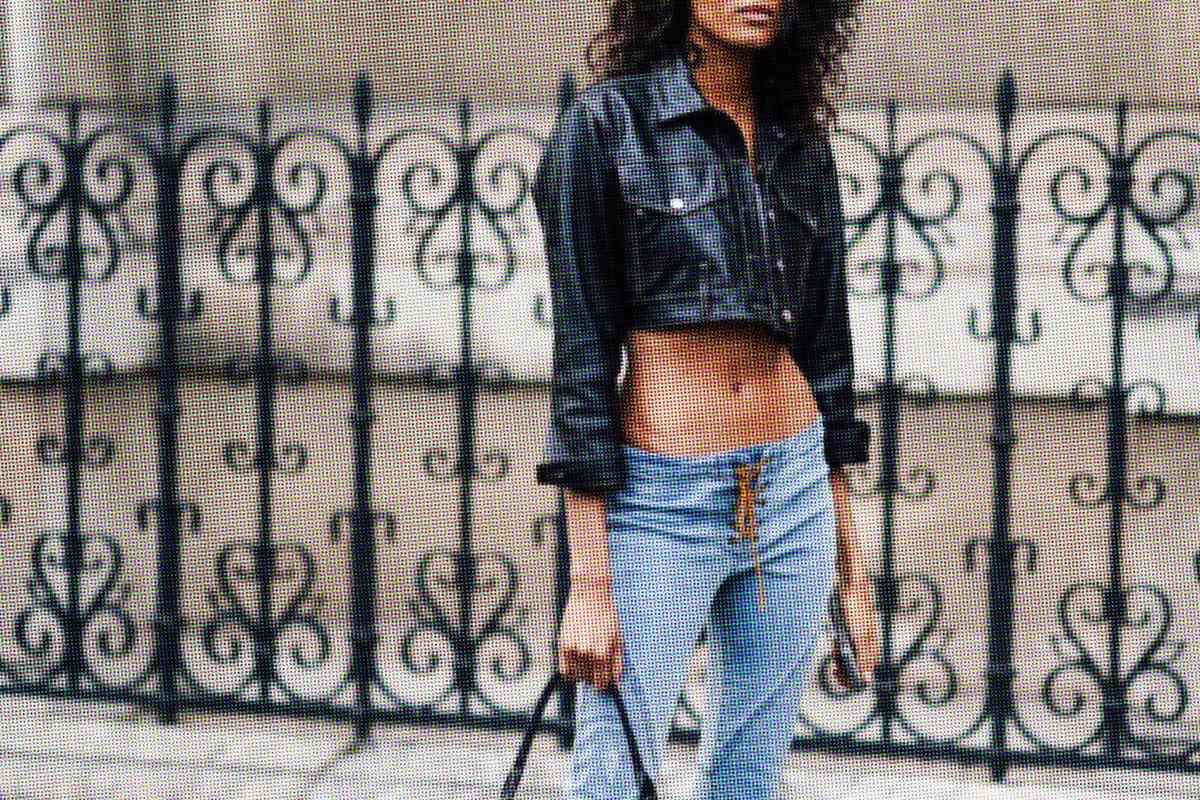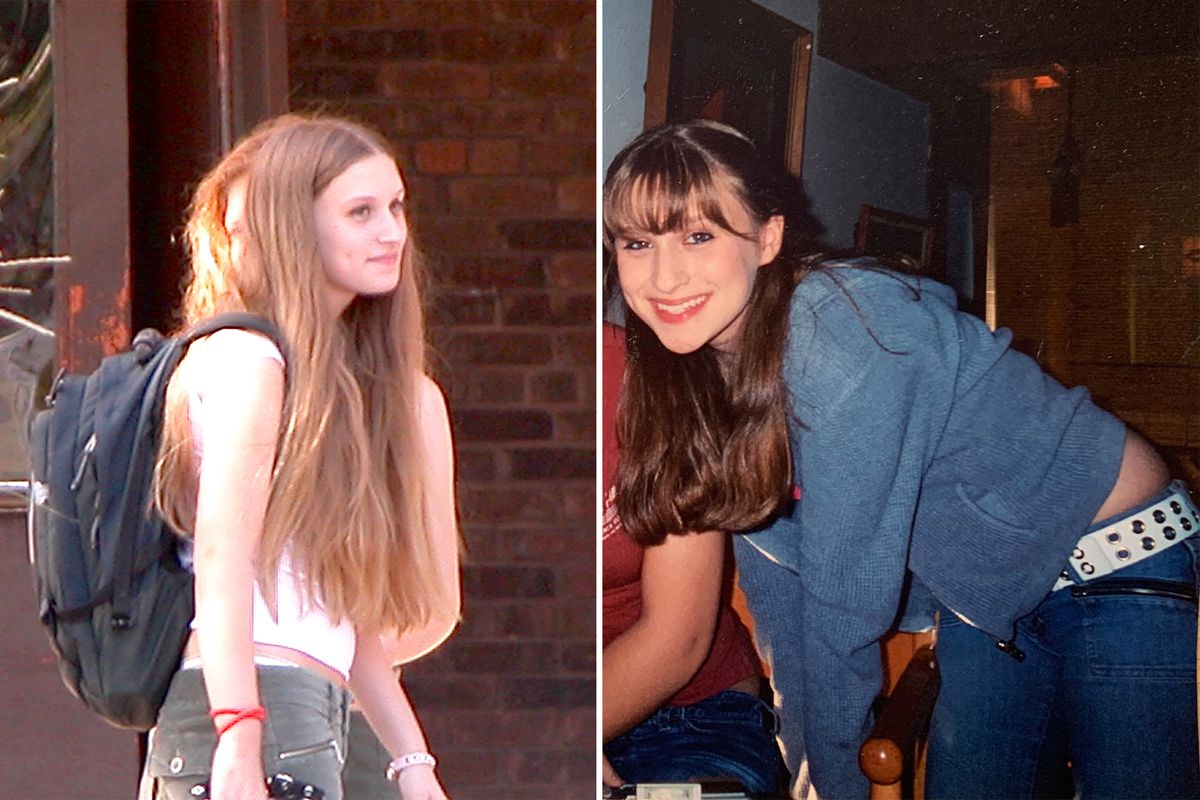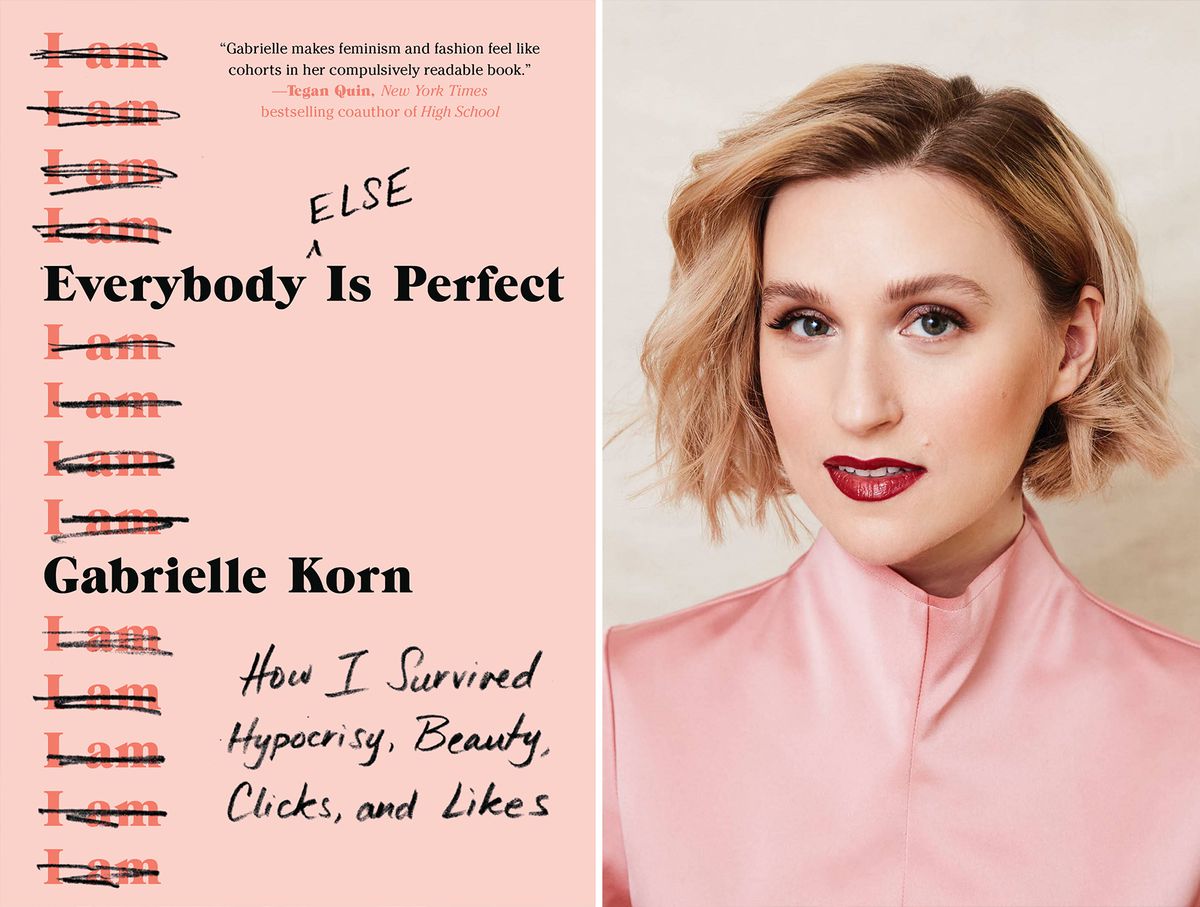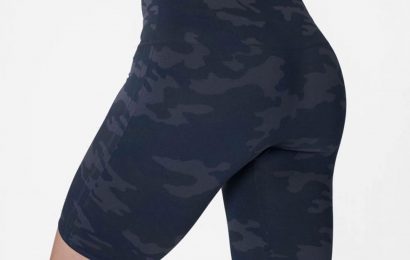I started high school in 2003. George W. Bush was president, and it was the year the war in Iraq began; meanwhile, the government was pushing for abstinence-only education in public schools, and gay marriage remained illegal. The Simple Life starring Paris Hilton and Nicole Richie premiered, and late-night infomercials promoted Girls Gone Wild. These mixed messages of chasteness and performative sexiness set the stage for low-rise jeans — they weren't just trendy, they were ubiquitous.
As a teenager on Long Island in the early aughts, my favorite pair was from Delia's: stretchy, faded blue-gray denim, with zipper pockets and slightly flared ankles that dragged on the floor so much that the hem was frayed and mud-stained. They buttoned just above my pubic line and my colorful Victoria's Secret thong was pretty much always whale-tailing out the back, my black studded belt barely holding me together.
One day at school I was crouching down in front of some cabinets trying to find a book when I felt something cold and hard press into my skin. I jumped up and found one of the senior boys behind me, laughing hysterically. He had put a penny in my butt crack, which I guess had been showing while I was crouching, thanks to my low-rise jeans. I don't remember what exactly I said, but I do remember feeling my entire body turn splotchy and red, and I know that he told me to calm down, to lighten up, to take a joke. A few weeks later, he pulled me into an empty classroom and offered me a back massage that ended with his hands up my shirt. I didn't say no, but I definitely hadn't said yes, either, and was instead frozen with embarrassment. I was fourteen.
I didn't know what to make of the way boys were treating my body. They seemed to feel entitled to it, like the mere fact of my presence meant they were owed something. It simultaneously gave me power and rendered me powerless.
I was coming of age in a time when everything was hypersexualized, but I didn't understand the relationship between that and actual sex, a disconnect that's one of the main reasons I didn't realize I was gay until after high school: it was like being disembodied. There was no connection between the performance of sexiness and my own pleasure, because I legitimately didn't feel any. I might have worn low-rise jeans to look "hot," but I wasn't thinking about wearing them to look sexy, though I suppose that was the effect they had, buttoning dangerously close to the top of my (also low-rise) underwear.
Over the next couple of years as hormones raged through me, those pants became my enemy. Not wearing them didn't occur to me. Instead I took to wearing them with bulky knit sweaters or zipped-up hoodies, anything to hide the soft flesh that piled up above that tight waistband. I was often accidentally ripping off the belt loops trying to pull my jeans up over my love handles. Eventually I realized they'd fit "right" if I simply didn't eat until dinner for enough days and then weeks in a row, so that's what I did.
The idea of body positivity had not entered the mainstream. I understood that it was "bad" to have an eating disorder, and I think I noticed Dove's Campaign for Real Beauty, but it was also the time of Destiny's Child, Britney Spears, Kate Hudson, Keira Knightley, and Paris Hilton, and all their teeny-tiny bodies with their long, flat stomachs, hollow between their pointy hip bones. Fat women were mocked mercilessly in movies, on TV, and in real life. I was too young to be aware of how closely everything — the clothes that were in style, the nearly pornographic celebrity culture, and the political climate — was related, and further, how subject to change it would all be.
I was finally able to vote in 2008, which meant I got to cast my first-ever ballot for Barack Obama during my sophomore year of college. I had started dating girls just a few months before the election and was suddenly painfully aware of how my life would be impacted by the personal beliefs of lawmakers. Obama was against gay marriage at that point but also said he would be open to discussing it, which was definitely more than what Bush had said. (Bush had, in fact, proposed an amendment to the Constitution that would ban it forever, while it was already illegal.)
As a new lesbian, and someone who came out in the context of a relationship, not a community, I had no idea how to go about finding my people. I wanted nothing more than to be visible to others. The boyfriend jeans trend — blissfully soft and saggy straight-legged pants with generous pockets that looked fine no matter what I'd eaten or how close I was to my period — helped a lot. Plus, they were so comfortable, and physical comfort acted as a metaphor for how it felt to realize I was gay. There was power in jeans that fit. It was a new kind of sexiness, one that was outside of any sort of male gaze.
I wasn't sure what exactly my gender presentation should be, though. I'd always been so feminine, and when I came out, I was generally attracted to other feminine girls, but they seemed to only be interested in me when I was dressed androgynously. I took to wearing my boyfriend jeans with gray or black Hanes tank tops, the kind you buy in bulk from Kmart, and stopped wearing a bra. I started shaving parts of my head and then eventually all of it. Being visibly queer made me feel more myself than I ever had, even if I had yet to fully nail down where my femininity fit within it.
But I soon realized I wasn't sending the right message. I remember once bringing a woman home with me from a party, and when she entered my bedroom, she looked around at the mess of makeup and products and exclaimed, "Oh my god. You're such a girl!" I was mortified. Had it been that hard to tell?
Thankfully, within a few years, with Obama in the White House for a second term and equal rights for women and minorities on the horizon, high-waisted pants settled over everything like a warm blanket. A shape that flatters hips and booties, high-waisted jeans seemed to be designed with actual curves in mind. This, too, was good timing for my personal life: I was ready to return to the femininity that felt the most natural to me, and I had realized that the women I liked most didn't really care at all about the rise of my jeans.
Suddenly, the bigger your pants were, the better — the opposite of what I had grown up with. But high-waisted pants weren't without complications. Jesse Kamm, the designer credited with truly bringing the high-waisted silhouette to the masses with her 2013 debut of the now cult-classic sailor pants, later made headlines again when women began pointing out that her pants don't run above a size 12, limiting the women who could benefit from the high-waisted, wide-leg shape to the same ones who could enjoy low-rise pants. For plus-size women, the progression from low-rise to high-rise didn't seem like progress at all.
Similarly, the sociopolitical progress made under Obama turned out to not be as widely celebrated as those of us living in progressive bubbles liked to believe — bubbles that were popped in 2016, when we were all so sure we were about to witness the election of the first-ever female president.
Trump's election to office wasn't just a win for Republicans; it was a win for men everywhere who grabbed women without consent. His power made way for everyone's down-low sexism, racism, and homophobia to be aired. In 2017, the FBI reported the highest surge in hate crimes since 9/11. There were nazi rallies across the country. Even in New York City, it felt suddenly unsafe to exist, especially on the subways, where I was attacked physically and verbally by men multiple times. Once while I was on the way to work holding hands with my girlfriend, a man spit on us.
The social media activism that flourished under Obama took hold in a new ways. Perhaps because it felt like there was nothing we could do about Trump, women had other targets, using social media to organize marches, and then with #MeToo, take down serial rapist Harvy Weinstein and abusers across industries.
Body positivity joined the chat, and became another social justice topic performed online. The problem, though, was that thin women were doing it, too; women whose bodies were probably never marginalized for their size wanted in on the self-love, seeking validation for their insecurities through means created by women who were actually oppressed for the way they looked. Body parts got hashtagged. Even though the skinny-driven #thighgap was replaced in popularity with #thighbrow, this labeling created an implied hierarchy. For every person who saw themselves reflected in a trending body-part hashtag, someone else did not.
Even before hashtags, women's body parts have been going in and out of style for as long as there's been style. When I was a teenager, it was stomachs. Everyone wanted a six-pack. The best way to show off your flat stomach was with low-rise jeans; they were especially cool looking if you were skinny enough to have your jeans reveal the top of a V-shaped muscle that started at your hip points and ended just out of sight. It was an era that shamefully and unabashedly prized thinness. The jeans were proof.
So when news of the low-rise return began trending online, the internet reacted with a collective "NOOOO!" "No one wants this," we screamed at our screens, as though we would be powerless to stop it.
But we aren't powerless, especially not now. Thanks to the democratization of fashion, there's almost complete transparency into the moments that dictate trends. So this time around, armed with insight and not-too-distant memories, the generation that's been shamed so much for our reliance on our technology — my generation — has more power than ever before. The same way social media has given us insight into politics and helped us find a voice there, we can use it to fight back. But will we?
Instagram gives everyone total control over the images of themselves that are published for the world to see, but in reality, once we have that control, we haven't found ourselves implementing the lessons we've learned about the way Photoshop and runway models have affected Western female self-esteem; instead, we use filters and Facetune. As the platform grew and photos became easy to manipulate, the vibe switched from "See? Nobody is perfect!" to, "Actually, look how perfect I am."
Depending on whom you follow, you could easily curate your feed to confirm a universal sneaking suspicion: that everybody is perfect but you. But it's not just that people are pretending to reflect their real lives on Instagram — it's that they're showing their best lives. It's competitive, exhausting, addicting, all encompassing. It hinges on virtue signaling. It sets us all up to fail. And ultimately as a result it's become harder and harder to tell the difference between what's real and what's enhanced.
As women's media grapples with how to be more positive and inclusive while covering topics like fashion and beauty, I frequently find myself caught between two worlds — the world of empowerment culture and that of perfectionism. At the intersection of these two things is the idea that everybody is already perfect and that there is power in owning your self-worth as is, which is, I think, the ideal at the heart of contemporary pop culture feminism. The further away from empowerment the idea of perfection gets, the more you enter spaces where women still talk about their weight-loss goals and fat-shame other people. The further away from perfection culture you get, the closer you are to a value system that takes women's aesthetics out of the equation entirely. Neither extreme works for me. I believe there is value in what we wear and how it makes us feel.
The common denominator, though, is that both ways of viewing the world are grounded in a digital performance of feminism. And in our digital lives, we are allowed to create our own narratives, with ourselves at the center — rather than ourselves as inevitable by-products of a world we can't control.
Generations before us, women fought for the right to wear pants. Now we need to make sure those pants don't make us want to starve, don't punish us for eating a nice big lunch, and can be worn by all of us. And if low-rise jeans really do become cool again, I'll have no problem sitting it out. Maybe it's my thirties talking, but I'd rather be off trend than uncomfortable. And anyway, who I am has nothing to do with how my jeans fit.
Copyright Ó 2020 by Gabrielle Korn. From EVERYBODY (ELSE) IS PERFECT: How I Survived Hipocracy, Beauty, Clicks, and Likes by Gabrielle Korn to be published by Atria Books, a Division of Simon & Schuster, Inc. Adapted and printed by permission.
Source: Read Full Article










